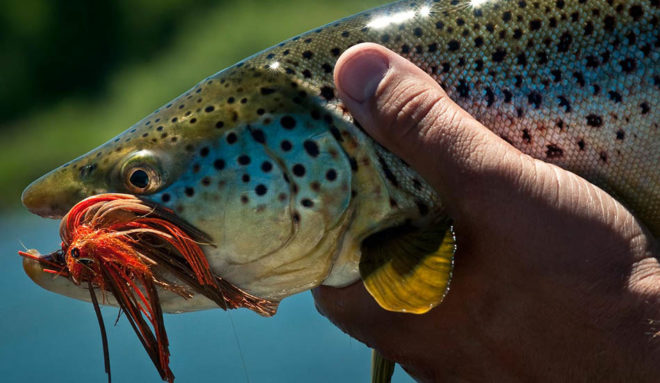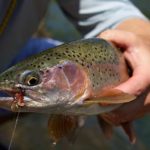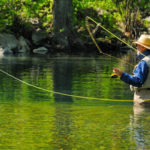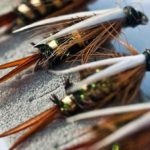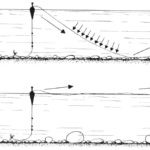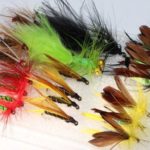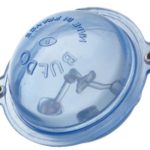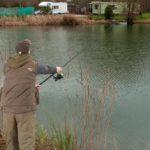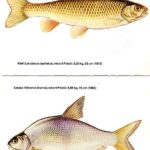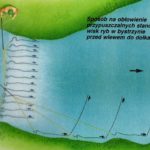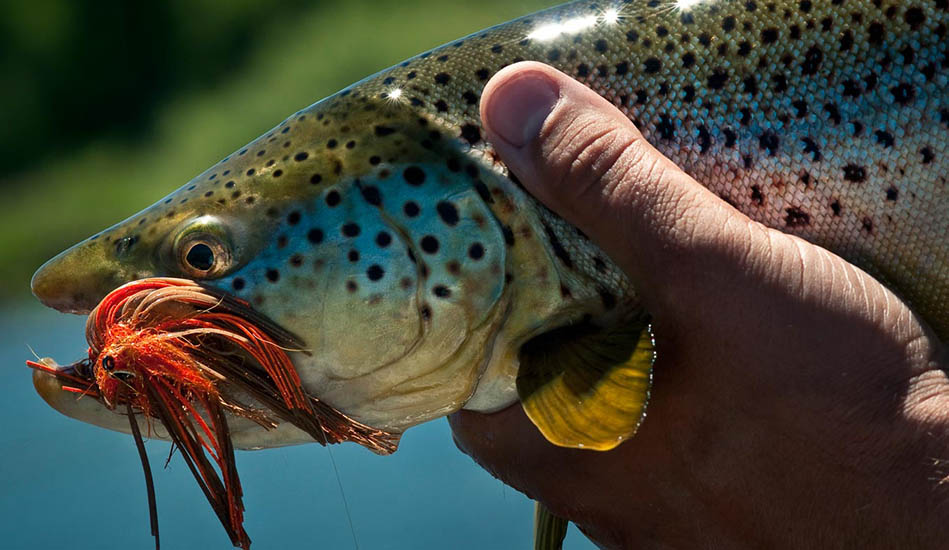 Połów na mokrą muchę – Tę metodę połowu wybieramy wtedy, gdy ryby zupełnie nie wykazują zainteresowania pokarmem z powierzchni wody: gdy można przypuszczać, że swoją uwagę kierują w stronę pokarmu z toni wodnej. O tego rodzaju upodobaniach ryb można się przekonać niekiedy nawet wzrokowo – świadczą o tym błyśnięcia łusek lub cienie w wodzie (także tutaj okulary polaryzujące mogą okazać się bardzo pomocne).
Połów na mokrą muchę – Tę metodę połowu wybieramy wtedy, gdy ryby zupełnie nie wykazują zainteresowania pokarmem z powierzchni wody: gdy można przypuszczać, że swoją uwagę kierują w stronę pokarmu z toni wodnej. O tego rodzaju upodobaniach ryb można się przekonać niekiedy nawet wzrokowo – świadczą o tym błyśnięcia łusek lub cienie w wodzie (także tutaj okulary polaryzujące mogą okazać się bardzo pomocne).
Mokre muchy najlepiej rzucać skośnie pod prąd lub łagodnie z prądem. Po opadnięciu na wodę wyrównujemy zwis przyponu i linki, a musze pozwalamy swobodnie przemieszczać się na różnych głębokościach wody, tak by sprawiała jak najnaturalniejsze wrażenie. Jeżeli mucha ma pełną swobodę ruchu, prąd wody zaniesie ją do miejsc, gdzie ryby oczekują na naturalnie spływający pokarm.
Technika połowu tą metodą może być także inna, niekiedy można muchę w pewnym miejscu na moment zatrzymać, ewentualnie nawet pociągnąć ją z powrotem.
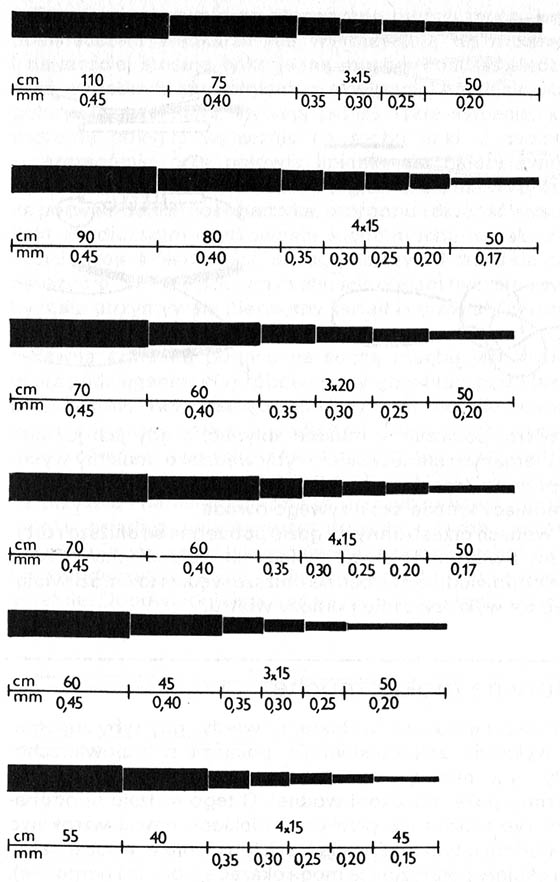 Podstawowe rodzaje przyponów muchowych
Podstawowe rodzaje przyponów muchowych
Klasyczna mokra mucha powinna naśladować bądź obumarłego dojrzałego owada, bądź owada właśnie lęgnącego się (subimago). (Pozostałe warianty mokrych much są zaklasyfikowane w oddzielnych grupach).
Także w tym wypadku można łowić na dwie muszki. Przy ich wykorzystywaniu końcowa jest zanurzona, natomiast druga, umocowana na bocznym przyponie pływa po powierzchni lub podskakuje tuż nad nią. Ten sposób wędkowania pozwala się przekonać, na jakim poziomie wody można liczyć na sukces. Przy ograniczaniu się do stosowania wyłącznie metody mokrej muchy obie muchy powinny być zanurzone.
Połów „na pewniaka” w tym wypadku jest raczej niemożliwy, pomóc może „wędkarskie wyczucie” oraz wiadomości o nawykach ryb. Z reguły sytuacja zmusza nas do systematyczniejszego obławiania wybranego łowiska, zawsze jednak należy zwracać uwagę na miejsca szczególnie nadające się na stanowiska ryb.
Jednym z problemów, z jakimi stykamy się podczas połowów na mokrą muchę jest utrudniona obserwacja brania ryby; często przyczyną tego jest nieprzejrzysta woda czy też zbyt szybki nurt. Częściowo pomocą służą okulary polaryzujące, głównie jednak zdani jesteśmy na obserwację linki w miejscu zanurzenia się pod powierzchnię. Dla lepszej orientacji możemy linkę w odległości ok. 3 m od przyponu oznaczyć jaskrawym kolorem.
W porównaniu z metodą suchej muchy mokrą muchę z niejasnych przyczyn uważa się za pewną degradację wędkarstwa muchowego. Są fanatycy, którzy się „nie zniżają” do tej metody nawet za cenę powrotu do domu „o kiju”.
Jest to postawa konserwatywna, metoda mokrej muchy jest praktycznie równie cenna jak łowienie na suchą muchę i z powodzeniem można ją stosować podczas całego sezonu tak przy czystej, jak i lekko zmąconej wodzie, przy podnoszącym się i opadającym poziomie, przy ciepłej i chłodnej pogodzie.
 Rzuty wędką muchową: A —znad głowy, B – obrotowy, C — poziomy, D – Sposób wiązania muszki do przyponu.
Rzuty wędką muchową: A —znad głowy, B – obrotowy, C — poziomy, D – Sposób wiązania muszki do przyponu.
